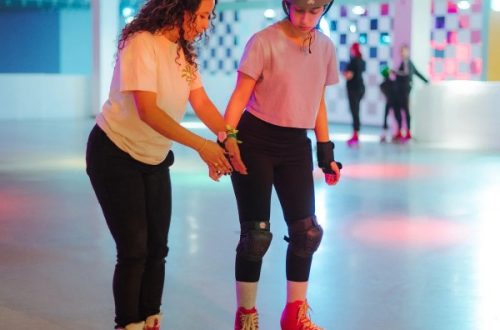Part 1: The Importance of Play for Babies
Play is a fundamental aspect of a child’s development, and it starts from the earliest stages of life. Understanding when babies begin to engage in play can provide valuable insights into their cognitive, physical, and social development.
Point 1: Exploring the Senses
From birth, babies start to explore the world around them through their senses. They touch objects, listen to sounds, and observe their surroundings. These early sensory experiences lay the foundation for future play interactions.
Point 2: Cognitive and Motor Development
As babies grow, their cognitive and motor skills develop, enabling them to actively engage in play. They start to reach for objects, grasp toys, and explore their properties. This exploration helps develop their hand-eye coordination, fine motor skills, and cognitive abilities.

Part 2: Early Signs of Play
While play in infants may differ from that of older children, there are early signs that indicate babies are beginning to engage in play.
Point 1: Observing and Tracking Objects
Around 2 to 3 months of age, babies start showing an increased interest in objects. They will visually track moving toys or people, demonstrating their growing ability to focus and follow objects.
Point 2: Babbling and Smiling
As babies reach 3 to 4 months of age, they begin to babble and make cooing sounds. They also smile and laugh in response to playful interactions with caregivers. These social cues indicate their emerging interest in playful interactions and their growing capacity for communication.
Part 3: Developmental Milestones and Play
Babies’ play evolves as they meet various developmental milestones. Recognizing these milestones can help caregivers provide appropriate play experiences for their little ones.
Point 1: Reaching and Grasping
Around 4 to 6 months of age, babies start to develop the ability to reach out and grasp objects intentionally. This milestone opens up a world of possibilities for play as babies begin to explore and manipulate toys with their hands.
Point 2: Sitting and Object Manipulation
Between 6 to 9 months, babies typically gain the ability to sit independently. This increased stability allows them to engage in more complex play interactions, such as stacking blocks, knocking down towers, and fitting objects into containers. These activities support their fine motor skills, problem-solving abilities, and spatial awareness.
Part 4: Creating a Playful Environment
Caregivers play a vital role in creating a supportive and enriching play environment for babies.
Point 1: Offer a Variety of Toys
Providing babies with a variety of age-appropriate toys is essential for stimulating their development and keeping playtime engaging. Toys with different textures, colors, shapes, and sounds can capture their interest and promote sensory exploration.
Point 2: Encourage Interactive Play
Caregivers should actively engage in play with their babies to foster bonding and social development. Talking, singing, and making eye contact during playtime enhances communication skills and emotional connections. Additionally, providing safe spaces for babies to explore, such as a play mat or soft toys, encourages independent play and builds their confidence.
In conclusion, play is a crucial part of a baby’s development, starting from early sensory exploration and progressing to more complex interactive play. Understanding the signs and milestones of play can help caregivers create a nurturing and stimulating play environment for their babies. As babies reach developmental milestones and engage in play, they develop crucial skills in areas such as cognition, motor coordination, communication, and social interaction. By providing appropriate toys and actively participating in play, caregivers can support their babies’ growth and lay the foundation for a lifetime of joyful and enriching play experiences.


